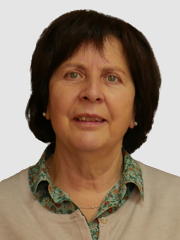Educational Background
- M.Sc. 1990, Basin Evolution and Dynamics, Royal Holloway University of London (UK)
- Ph.D., 1989, Structural Geology, University of Oviedo (Spain)
- B.Sc., 1982, Geology University of Oviedo (Spain)
Research Interests
My research interest is the understanding of how Earth Systems work by measuring the rates of processes, their interactions, and their variations in time. In particular, most of my research is concentrated on the processes associated with crustal deformation along plate boundaries and these relate to the evolution of orogenic belts. My research is centred on three main themes.
The structural evolution and kinematics of foreland thrust and fold belts
The methodology of “balance cross-sections” applied to the study of foreland thrust and fold belts (FTFB) has provided a very robust tool to establish the genetic links between structures, their evolution over time, and the mechanics of orogenic wedges. My studies of foreland thrust and fold belts using this methodology began in the 1980s’ with establishing the three-dimensional geometry and the quantification of shortening of the Ponga Thrust System in the Variscan Belt of NW Spain. I have also participated in studies of the Southern Urals FTFB in Russia, the Magallanes FTFB in the southern Andes, the Precordillera FTFB in the Argentinian Andes, and at present I am involved in similar research in the active Taiwan FTFB. These studies include the analysis of the syntectonic sedimentary record, the fold – fault interactions, and the effect of pre-existing basement structures, among other things.
The architecture of the continental crust and orogenic processes
The concepts of area balancing of a cross section and structural linkage when applied at crustal scale allows us to stablish kinematic and mechanical models that greatly improve our understanding of orogenic evolution. These studies are generally carried out in a multidisciplinary manner along transects at the scale of the whole orogen. These transects involve the collection, processing and interpretation of large amounts of geological and geophysical data. Often they are focussed around deep seismic reflection/refraction profiles. My research with the ESCI deep seismic profiles across NW Spain helped to resolve the linkage of shallow structures with middle and lower crust structures, confirming the thin-skinned deformation style of thrust systems in the Cantabrian Zone. The crustal-scale structure of the southern Urals was also investigated by using the URSEIS and ESRU reflection and wide-angle seismic profiles. These experiments, together with field geology, highlighted the state of preservation of this Paleozoic orogeny, making it a world class model in the study of orogenic processes, especially those related to arc-continent collision. This Paleozoic model has provided many insights into the ongoing studies of the active arc-continent collision in Taiwan. We have also studied the crustal-scale structure and kinematics of active plate boundaties such as those in Cyprus, and in the North and South of Iberia.The relations and interactions between deep and shallow processes.
In recent years, the multidisciplinary studies mentioned above have highlighted the existence of a link between surface processes and subsurface structures. Modern concepts of Earth Systems consider that deep and shallow processes are linked and that they interact with each other, although in ways that are not fully understood. My work within this theme relies on an international team of researchers using methodologies such as low temperature thermochronology and the quantification of erosion and denudation rates using cosmogenic nuclides. Currently, we are working on the Cantabrian Mountains of northern Spain, focussing on the analysis and quantification of shallow processes that contribute to the development of the present landscape. This small coastal mountain belt provides a good model in which to study the interaction of processes during the incipient stage of orogenic evolution.

